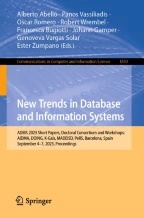Abstract
In this paper we show the importance of mining totally ordered sequential rules, and in particular we propose an extension of sequential rules where not only the antecedent precedes the consequent, but their itemsets are labelled with an explicit representation of their relative order. This allows us to provide more precise timely recommendations. Our technique has been applied to a real-world scenario regarding the provision of tailored suggestions for supermarket shopping activities.
Access this chapter
Tax calculation will be finalised at checkout
Purchases are for personal use only
Similar content being viewed by others
References
Adomavicius, G., Tuzhilin, A.: Toward the next generation of recommender systems: a survey of the state-of-the-art and possible extensions. IEEE Trans. Knowl. Data Eng. 17(6), 734–749 (2005)
Agrawal, R., Srikant, R.: Fast algorithms for mining association rules in large databases. In: Bocca, J.B., Jarke, M., Zaniolo, C. (eds.) Proceedings of VLDB’94, pp. 487–499. Morgan Kaufmann (1994)
Ao, X., Luo, P., Wang, J., Zhuang, F., He, Q.: Mining precise-positioning episode rules from event sequences. IEEE Trans. Knowl. Data Eng. 30(3), 530–543 (2018). https://doi.org/10.1109/TKDE.2017.2773493
Cormode, G., Shkapenyuk, V., Srivastava, D., Xu, B.: Forward decay: a practical time decay model for streaming systems. In: 2009 IEEE 25th International Conference on Data Engineering, pp. 138–149 (2009)
Fournier-Viger, P., Gueniche, T., Zida, S., Tseng, V.S.: ERMiner: sequential rule mining using equivalence classes. In: Blockeel, H., van Leeuwen, M., Vinciotti, V. (eds.) IDA 2014. LNCS, vol. 8819, pp. 108–119. Springer, Cham (2014). https://doi.org/10.1007/978-3-319-12571-8_10
Fournier-Viger, P., Lin, J.C.W., Kiran, R.U., Koh, Y.S.: A survey of sequential pattern mining. Data Sci. Pattern Recogn. 1(1), 54–77 (2017)
Fournier-Viger, P., Wu, C., Tseng, V.S., Cao, L., Nkambou, R.: Mining partially-ordered sequential rules common to multiple sequences. IEEE Trans. Knowl. Data Eng. 27(8), 2203–2216 (2015)
Linden, G., Smith, B., York, J.: Amazon.com recommendations: item-to-item collaborative filtering. IEEE Internet Comput. 7(1), 76–80 (2003)
Marastoni, N., Oliboni, B., Quintarelli, E.: Explainable recommendations for wearable sensor data. In: Wrembel, R., Gamper, J., Kotsis, G., Tjoa, A.M., Khalil, I. (eds.) DaWaK 2022. LNCS, vol. 13428, pp. 241–246. Springer, Cham (2022). https://doi.org/10.1007/978-3-031-12670-3_21
Pei, J., et al.: Mining sequential patterns by pattern-growth: the prefixspan approach. IEEE Trans. Knowl. Data Eng. 16(11), 1424–1440 (2004)
Srikant, R., Agrawal, R.: Mining sequential patterns: generalizations and performance improvements. In: Apers, P., Bouzeghoub, M., Gardarin, G. (eds.) EDBT 1996. LNCS, vol. 1057, pp. 1–17. Springer, Heidelberg (1996). https://doi.org/10.1007/BFb0014140
Zhang, C., Lyu, M., Gan, W., Yu, P.S.: Totally-ordered sequential rules for utility maximization. CoRR abs/2209.13501 (2022). https://doi.org/10.48550/arXiv.2209.13501
Author information
Authors and Affiliations
Corresponding author
Editor information
Editors and Affiliations
Rights and permissions
Copyright information
© 2023 The Author(s), under exclusive license to Springer Nature Switzerland AG
About this paper
Cite this paper
Dalla Vecchia, A., Marastoni, N., Migliorini, S., Oliboni, B., Quintarelli, E. (2023). Mining Totally Ordered Sequential Rules to Provide Timely Recommendations. In: Abelló, A., et al. New Trends in Database and Information Systems. ADBIS 2023. Communications in Computer and Information Science, vol 1850. Springer, Cham. https://doi.org/10.1007/978-3-031-42941-5_18
Download citation
DOI: https://doi.org/10.1007/978-3-031-42941-5_18
Published:
Publisher Name: Springer, Cham
Print ISBN: 978-3-031-42940-8
Online ISBN: 978-3-031-42941-5
eBook Packages: Computer ScienceComputer Science (R0)
